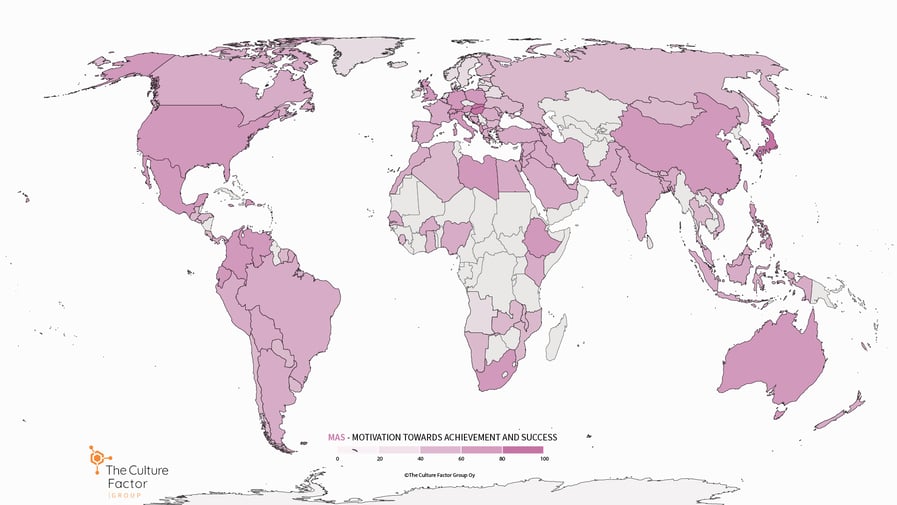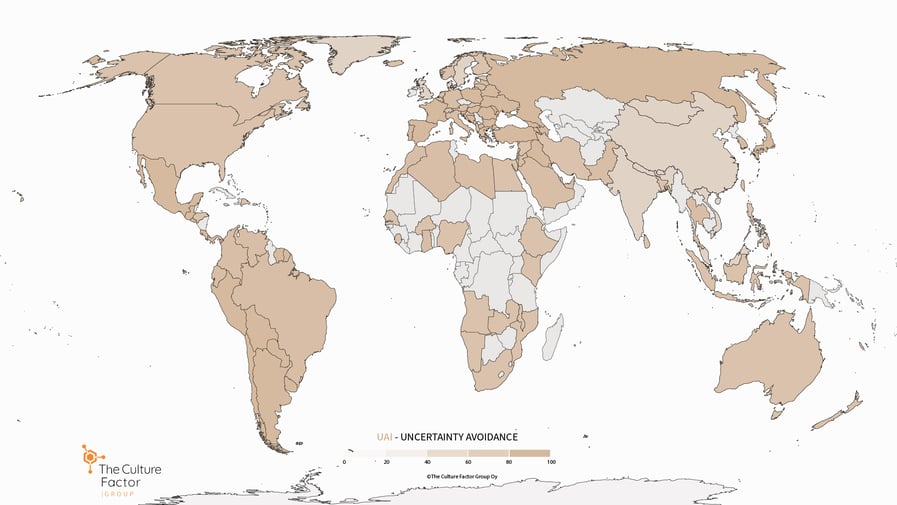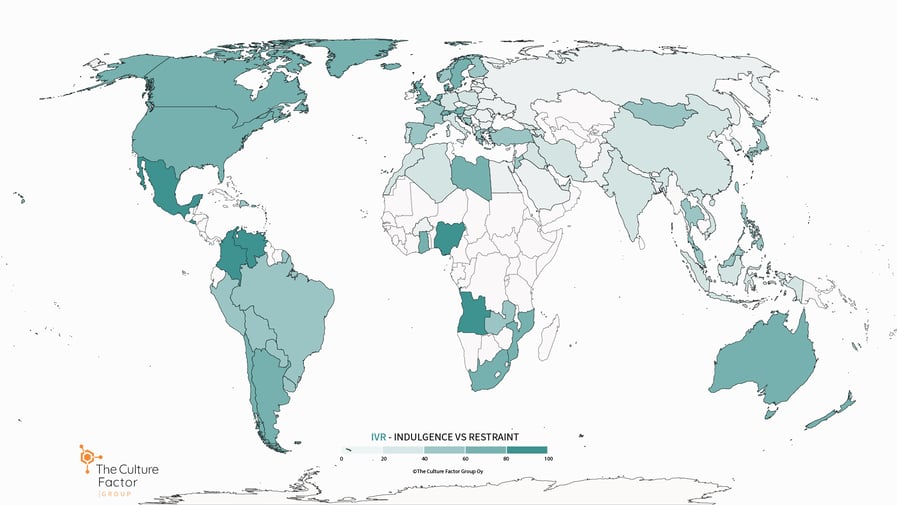About the 6-D model maps
This page presents six maps that visualise national culture using the 6-D model of National Culture (please note this model is an updated version of the original scores more information in our FAQ) . Each map captures one cultural dimension as measured across countries. Together, they form a system that helps explain why people act the way they do, in business, teamwork, leadership, negotiation, and everyday settings.
The maps offer a clear, evidence-based lens into cultural expectations, communication styles, hierarchical norms, tolerance for uncertainty, and more. Use this as a practical tool, to benchmark, understand, and anticipate how culture shapes behaviour across borders.
How to read the maps effectively
Each map shows a country’s relative position on a 0–100 scale for one dimension; scores above 50 are high, below 50 are low, but these are only meaningful in comparison to other countries.
Use the maps to:
Compare cultures quickly (e.g. Finland vs. Japan on Uncertainty Avoidance).
Inform cross-cultural management, communication, negotiation, or leadership strategies.
Identify where misunderstandings are likely to emerge and proactively adapt your approach.
Want to explore culture on a personal level?
Alongside the national culture maps, we offer the Culture Compass, a tool that allows individuals to discover their personal cultural profile and identify potential issues and opportunities.
For educational institutions, we offer a significant discount.
Interested? Reach out to us to learn how the Culture Compass can become part of your programme.
Want more maps, Cultural data and tools for your organisation? Request a Culture Portal demo.
Power Distance
Definition: This dimension expresses the degree to which the less powerful members of a society accept and expect that power is distributed unequally.

Individualism vs. Collectivism (IDV)
Definition: The high side of this dimension, called Individualism, can be defined as a preference for a loosely-knit social framework in which individuals are expected to take care of only themselves and their immediate families.

Motivation towards Achievement & Success (MAS)
Definition: The high side of this dimension represents a preference in society for achievement, heroism, assertiveness, and material rewards for success. Society at large is more competitive. The low side, stands for a preference for cooperation, modesty, caring for the weak and quality of life. Society at large is more consensus-oriented.
The Culture Factor Group refers to this dimension as Motivation towards Achievement and Success.

Uncertainty Avoidance (UAI)
Definition: The Uncertainty Avoidance dimension expresses the degree to which the members of a society feel uncomfortable with uncertainty and ambiguity. The fundamental issue here is how a society deals with the fact that the future can never be known: should we try to control the future or just let it happen?

Long-Term Orientation vs. Short-Term Normative Orientation (LTO)
Definition: Every society has to maintain some links with its own past while dealing with the challenges of the present and the future. Societies prioritise these two existential goals differently. Societies that score low on this dimension, for example, prefer to maintain time-honoured traditions and norms while viewing societal change with suspicion. Those with a culture which scores high, on the other hand, take a more pragmatic approach: they encourage thrift and efforts in modern education as a way to prepare for the future.

Indulgence vs. Restraint (IVR)
Definition: Indulgence stands for a society that allows relatively free gratification of basic and natural human drives related to enjoying life and having fun. Restraint stands for a society that suppresses gratification of needs and regulates it by means of strict social norms.

Remember
Culture is relative, not absolute: Only comparisons make sense.
National cultural values change slowly and together, our data is peer-reviewed and updated regularly to reflect the most accurate understanding.
Because these are based on research we only have scores for countries/region where research has been conducted. We are actively expanding our coverage through new research projects, and we also partner with organisations or institutions that need data for countries not yet represented. If your country or region is missing and you require these insights, please contact us, we can collaborate to add it.
FAQ
If you have more questions consult our FAQ.
These maps use the Equal Earth projection for more info on the equal earth project visit this page.